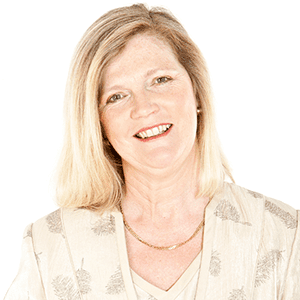

A COVID-19 update – Business Leaders’ focus turns to Risk Management and Compliance
In this episode, Christa Lenard, provides business leaders with clear, practical measures that’ll minimise ongoing risk and increased compliance in a COVID world.
Christa is a Partner at Kingston Reid, Australia’s largest national specialist employment law firm, and has over 15 years’ experience working with clients across a broad range of industries.
The landscape has shifted rapidly as we transition to the new normal and living with COVID. The conversation has shifted from restrictions to risk management and compliance. With a number of businesses bringing people back into the office it’s time to re-access those COVID safe plans.
Stephanie Christopher, asks the question, ‘Are there increased risks for employers because of shifts in expectations of health and safety at work, as a fall out from COVID, from a workers compensation perspective?’ and ‘How are employers managing issues around proof of public health orders with their staff?’ This brief update is an essential listen for all business leaders.
In this episode you’ll hear:
• Watch outs for employers bringing their teams back into office
• Clear, practical measures that will minimise ongoing risk and increased compliance in a COVID world
• Management of proof of COVID isolation
Stephanie: Welcome to TEC Live, Stephanie Christopher here, CEO of The Executive Connection. We connect leaders with a trusted network of people who help them succeed.
Leah: Stephanie, you over COVID yet?
Stephanie: I am. I am. I’m not fully back to exercising yet, but I’m pretty well over it
Leah:
Stephanie: … I’m over COVID in so many ways, Leah, and it feels like a great time, actually, to have our wonderful guest in the studio today, Christa Lenard.
Christa is a partner at Kingston Reed, which is Australia’s largest national specialist employment law firm. Christa has over 15 years’ experience working with clients across a broad range of industries, with a strong and much valued government practice at the Commonwealth and state level, where she is the trusted advisor on many complex employment matters. And while we are here thinking about small and mid-size businesses, what a complex suite of employment matters they have to deal with.
Anyway, Christa Lenard, welcome to TEC Live.
Christa: Thank you. It’s a pleasure to be here.
Stephanie: Great. Thank you for joining us.
If we were going to talk about COVID primarily today, is this conversation going to be out of date in a week or two?
Christa: It’s a great question because the landscape has shifted, obviously, and quite rapidly since December of last year. It’s a question that employers are having to look at in terms of really understanding what the risk is and how that risks change over the course of the pandemic. Certainly as these variants come and go, and certainly what we know anecdotally, I’m not going to profess to be a medical expert or anything, is that the Omicron variant, which is the predominant strain in Australia at the moment, does appear to be less severe and so the initial concerns in relation to the work health safety risk of businesses does need to adjust somewhat. Hopefully, as we see invariably other strains coming, they will be of a less severe nature, in which case, the conversation does need to change.
Stephanie: When we last spoke, it was mid-Delta and the whole fear about if someone caught COVID in your workplace, the implications for you as an employer. Even though Omicron is notionally more mild, then you’d also say there’s a greater risk that someone will catch it at work because it seems to be more contagious. So how are employers dealing with this when they’re looking now, with the change in health orders in New South Wales on the 1st of March, and bringing people back into the office, what should employers be aware of as potential traps?
Christa: Right. And it is important to remember that it is a risk and any risk in the workplace needs to be assessed and looked at from the basis of, well, if you can’t eliminate that risk, what can you do to minimise it?
Stephanie: To control it.
Christa: Right.
So, obviously, businesses currently, and have been for the last two years, having their COVID-safe plans in place, which include a range of measures to try and minimise that risk. As more people come back to the office, I think it’s a matter of reassessing and keeping those COVID-safe plans up-to-date, but also talking with your workforce and making sure their understanding of what is acceptable in the workplace is and does fit with the business’s notion. So that means, for instance, really practical stuff. Like if you’re going to have meetings and there still is requirements for the number of people in a room, that you maintain that and people are being sensible, that you do maintain a higher level of hygiene and cleanliness in the office and the things like that. So that’s very practical measures that we, unfortunately, have been having to do for the last two years, but we need to keep going.
I think a lot of businesses have spoken to their employees over the last particularly six months around vaccination and probably many have a good sense of who is vaccinated or at least the proportional percentage of workers vaccinated. I think it’s really important that we don’t let go and lose sight of that as a control measure. Whether or not it’s mandated or it’s strongly encouraged, it will assist, we know, in reducing the severity, but also the transmission of the virus. So if the companies do have or have insisted on vaccination and many have as a requirement to enter the office, I think it’s working out whether or not that’s going to remain a requirement or not.
And if not, that’s fine. That may be absolutely acceptable, but being prepared to answer employees questions around that and I think we’re seeing a lot of employees who are vaccinated saying, ‘Well, I’m a bit concerned about turning up to work with Stephanie sitting here who may be unvaccinated, or I know is.’ So being able to respond to those sort of queries and certainly having answers to those questions, consulting with your workplace is going to be really important.
Stephanie: I remember from last time we spoke at our webinar it was all about consultation. That’s what was critical.
Christa: And it always is. So whenever there’s any safety issue in the workplace, you’ve got to. You’ve got a positive duty under your work health safety legislation that applies to you to consult.
Now that’s the legal answer. The practical answer is you’re going to have a much happier workplace if you do keep discussions, particularly if you’ve got a smaller workplace and small to medium size businesses, that conversation will be important and having facts, having the answers, or at least if you don’t have the answers coming back and looking at them, but keeping very factual and the emotion out of those conversations will be important.
Stephanie: Interesting. So I’ve just had a thought, because I thought you were going to say something like policies around if you sick stay-at-home or practice is probably more than policies. Do you think that the workforce might have changed now that someone might, say, actually caught a bad flu at work that led to asthma, how much of a risk do you think there could be from shifts in expectations around safety and health at work, rather than just safety, health beyond COVID?
Christa: Yeah, that’s a great question because I think for years, we’ve all been battlers and come to the office when we’ve had the flu and no doubt have passed it on.
I think, look, the risk is proportionate. So if someone’s going to catch a cold or the flu in the workplace, then typically speaking, you’re sick for a period of time. There’s no ongoing, usually illness, associated with it and so it’s less severe. It is difficult to actually pinpoint where you catch a cold or a virus from-
Stephanie: Or anything these days, that’s true. Yeah.
Christa: … or anything, that’s right. And, of course, remembering people are coming to work on public transport, we’re hanging out in supermarkets, in movie cinemas.
So from a workers’ comp perspective, it’s always very difficult to be able to establish, I think, that you have contracted an illness at work. But certainly where there is evidence of such, then it could well be compensable. I think practically the more serious the illness, then that’s, obviously, going to be more of a measured risk.
Stephanie: Yeah. Okay. How are employers managing the issues around proof? So if someone says, ‘Well, I need to isolate because either I have COVID or…’ I mean, it changes all the time, whether you need to isolate or not, but how are employers managing that, are you finding?
Christa: There’s actually some positive obligations. If I take New South Wales, for example, under the public health orders that require employees, people who have in employment when they catch COVID, when they’ve been diagnosed through either a RAT or a PCR test, to notify their employer. So the first thing is, I guess, employers need to let their employees know that that is a requirement and that’s a requirement under the public health order that has implications for the employee not complying.
Secondly, I guess in that case, it would be reasonable then for an employer should they wish to, to require evidence. Again, speaking in New South Wales simply because we happen to be sitting here, there is, obviously, notifications that can be given from New South Wales Health if and when you record that you’ve received COVID, that or a PCR test result would be sufficient. The reason for the request needs to be reasonable. So, obviously, if a worker is unwell as a result of catching COVID and depending on the type of worker, they may have access to personal leave then, obviously, an employer is within its rights to ask for evidence to satisfy itself that that personal leave is such and the same goes for carer’s responsibilities.
Stephanie: Okay. So nothing much has really changed. The main thing that I’ve heard from you before is consultation being key. It remains key. The context has shifted since in then perhaps the last four months and it’s going to shift again.
Christa: It will, and I think the key thing there, if we round out on the third thing, which is your risk assessments and your monitoring of risk and the level of risk in your workplace. That’s going to take, again, you analyzing what’s happening externally with the virus and various strains, as well as the physical nature of your workplace, how workers interact with each other and the type of work being done. Of course, there’s industries where that’s a higher risk than others, so understanding that and not just setting and forgetting that assessment that you did pre-Christmas, but keeping that alive and updated.
Stephanie: It’s actually bringing to the fore what’s best practice for employers anyways.
Christa: It is.
Stephanie: Things that you normally tick off for compliance.
Christa: Yep, and we’re finding the COVID-safe plans are a great way of updating that risk assessment. Because that is something that does change and you do need to, obviously, be aware of differences, whether or not it’s the number of people per square meter in an office, whether or not it’s the requirement to wear masks indoors. As those requirements are changing, COVID-safe plans update. So using that COVID-safe plan in your business as a mechanism to monitor and assess risks and other control measures is a great way of doing it.
Stephanie: Really good. Christa Lenard, thank you very much for joining us.
Christa: It’s a pleasure. Thank you, Stephanie.
Stephanie: Discover more about TEC at www.vistage.com.au.



